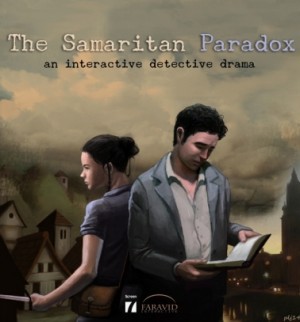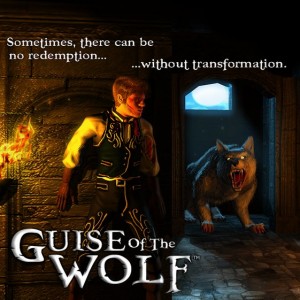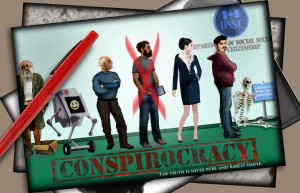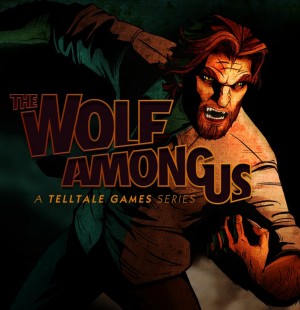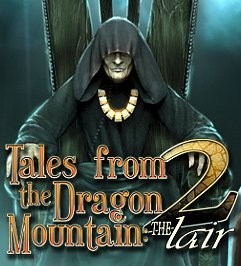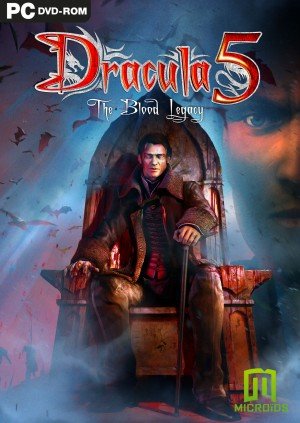Review for The Samaritan Paradox
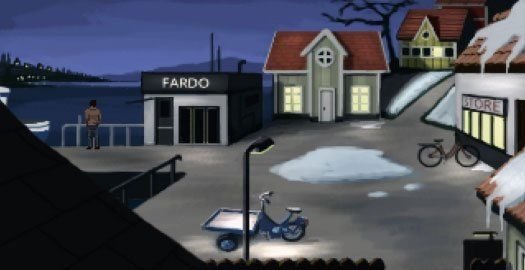
If I had to choose one word to describe The Samaritan Paradox, it would be “ambitious.” That might sound… well, paradoxical for such a deliberately retro title, but right from the get-go the game shows off its many strengths, including a gripping story, a fun variety of clever puzzles, and immersive 2D graphics. During its 6-7 hour playtime there are a few minor missteps, but overall the game succeeds in providing an enjoyable mystery and above-par puzzle design that should please most adventure fans.
The game takes place in 1984, when cryptologist Ord Salomon begins reading The Last Secret, ostensibly the final book by his favorite author, Jonatan Bergwall, before the author committed suicide on a boat off the coast of the island of Fardo, near Gothenburg, Sweden. When he starts browsing through, however, Ord notices that a code is hidden right on the dedication page, and all indications point to it being addressed to Bergwall’s daughter, Sara. Armed with this initial clue, Ord discovers that there is another, secret book that Jonatan wrote before his death. Sara believes it is a puzzle leading to her inheritance, a twisted way for her father to punish her for not following in his footsteps as a journalist, and she initially wants nothing to do with it. Sensing Ord’s disappointment, though, she agrees, promising to give him a share of the inheritance if he will help her. So begins Ord’s journey to unravel the secrets hidden between the novel’s pages, including the discovery that Jonatan’s death may have, in fact, been foul play.
Although at first the story seems like it will be a fairly predictable whodunit, twists and turns abound to keep things interesting. Players will go up against a dangerous arms-trafficking front that Bergwall was investigating, break into World War II-era bunkers, uncover a religious cult, and even face off with a fire-breathing dragon, although this last obstacle presents itself through a well-conceived fantasy gameplay mechanic rather than actually happening in the “real world.” Considering all these seemingly disconnected plot elements, the game could have become an unbelievable mish-mash, but in context the plot works, and is somewhat reminiscent of the first Broken Sword game. Unlike Revolution’s classic, however, the characters in Samaritan Paradox are comparatively two-dimensional, with the plot seeming to carry them along for the ride at times. At any rate, it became a fun puzzle in its own right just to see how far down the rabbit hole the plot was going to go. I expected that at some point it would go too far, but in the end it remained convincing and very enjoyable.
Gameplay is pretty much what you would expect from a 2D point-and-click adventure, with tasks such as gathering items, solving puzzles, and interviewing characters being the order of the day. Upon starting a new game, players will notice that the mouse-centric control scheme has been pared down to its bare essentials: left-click for movement and interactions of all types, right-click to look at or inspect an item, with an inventory and a notebook rounding out the interface. When exiting a location, players can choose their next destination using a map of either Gothenburg or Fardo Island, which contains an ever-increasing number of locations as play progresses. A “Take Ferry” button is used to switch between these two maps. That’s all there is to the controls, and it works well, making the game a breeze to pick up and play.
The interrogation mechanic is a little different from other games, and can be a source of frustration until its idiosyncrasies are deciphered. In addition to lines of dialogue tailored to each character, interview sequences involve using Ord’s notebook to ask questions, the answers to which may give clues to a puzzle or unlock a new location to explore. The notebook is filled out with topics of discussion rather than individual spoken lines, and the frustration lies in how the notebook is organized. Topics are added to the list as the game progresses, and it seems only natural that earlier topics would become obsolete over time. But this is not necessarily the case: topics fall in and out of relevance based upon new leads and clues and who you are interviewing at the time. Yet other than the occasional change in wording of an entry’s details, there is no indication of when a previously discussed topic might elicit a new response. Although this might seem nitpicky, it becomes a real issue when there is a whole list of potentially valid topics to choose from and irrelevant ones can’t be ruled out at a glance. You can generally deduce which topics will become relevant simply by paying attention to the plot, but multiple entries can change relevance at the same time, making it a challenge to keep up with which characters are significant to what topics.
Contrasted with the interview mechanic’s design problems, the puzzles are quite cleverly designed brain-teasers and include such tasks as deciphering a code derived from a poem and rigging a (non-lethal) booby trap. Even the inventory puzzles often require more than just combining objects to create new ones. For example, in order to crack the code on The Last Secret’s dedication page, you have to use the book in conjunction with one of Ord’s textbooks to translate it. It would have been easy to make this a simple matter of combining the two books together in inventory and outputting the message as just another item. Instead, allowing you to work out the code for yourself makes for a very satisfying extra layer of puzzle-solving. This trend continues throughout the game, as many puzzles that could have been dumbed-down or solved automatically are left to players to figure out using available clues. Timed puzzles or situations where you can fail (such as being caught in forbidden areas) are quite forgiving and only result in being sent back to the point before failure, though replaying some of the longer puzzles can be slightly time-consuming, especially if trial-and-error is needed to solve them. Fortunately, such scenarios are the exception rather than the rule.
Another compelling and well-executed feature (definitely my favorite part of the game, by far) appears when you manage to find the first chapter of Bergwall’s secret book, a strange fantasy novel featuring a young girl named Freja, obviously intended to be a young version of Sara Bergwall. “Reading” the novel begins a series of playable sequences in the book’s fantasy setting, with its own challenges to overcome and puzzles to solve. The plot and characters in the book are allegorical, based on an investigation Jonatan was involved in before he died, and clues found in the book carry over into the real world. Although such a feature could have been quite gimmicky, the contrast between the realism of the main story and the fantasy elements of the novel are handled so well that each enhances the other, and I can’t imagine the game without it.
Entering this fantasy world highlights another strength: the graphics. Highly reminiscent of the pixel art adventures from the early/mid ‘90s, the attention to detail and quality of the graphics are impressive, and there is a distinct difference between the grittier style used for scenes in Gothenburg and Fardo Island, and the colorful fantasy world setting of The Last Secret. For players, like myself, who are not all that keen on “dull and gritty” being used as a visual shorthand for “realism” (no matter how well done those graphics might be), that first glimpse of the desert island on which Freja finds herself stranded might seem a little like Dorothy finding herself in the land of Oz for the first time. The colors used in these scenes are immediately arresting, vibrant and saturated. Keeping in mind that every scene has been digitally painted pixel-by-pixel, animated water reflections in a couple of scenes deserve particular praise, seeming almost three-dimensional at first glance. Other animations such as trams moving along the tracks of Gothenburg and dragons flying through the air in the fantasy world are also well done.
The above-average voice acting and music also do their part to create a sense of immersion. Although the writing is stilted at times, the delivery is lively and it’s obvious that the actors were doing their best to engage with the script in order to make it as realistic as possible. There are a few occasions when the dialogue is hampered by over-enthusiastic delivery or verbal tics such as “um” or “eh” that, although obviously intended to make the conversation more natural, instead make otherwise acceptable dialogue sound artificial. However, these are minor complaints about an otherwise great effort. The music is also nicely done, and each composition generally matches the environment it accompanies or mood that it is supposed to convey quite well, with rock and jazz-inspired songs featured in a bar scene, and foreboding tunes being played during suspenseful moments. The score also changes depending on whether it is meant for the real world or for Jonatan’s fantasy novel, the latter often taking on a more dramatic, orchestral texture.
Unfortunately, my initial experience with The Samaritan Paradox was marred by a serious design flaw that occurred at a crucial stage near the end of the game, in which a gameplay sequence meant to reveal a key plot point could be unintentionally missed if you performed certain actions in the “wrong” order. It’s a shame that such an obvious error wasn’t caught before release, since it ruins the atmosphere of the ending. The good news is that a patch has already been released which solves this issue, saving any future players from the frustration I experienced.
Having come to The Samaritan Paradox with no prior knowledge or preconceived notions, within the first couple of hours of play I was pleased to find that it exceeded my expectations. A few gripes such as a confusing interrogation mechanic and underdeveloped characters prevent the game from quite achieving the greatness lurking within this title. Yet the high quality of the puzzles and a story that keeps itself together despite its numerous narrative twists is impressive. The dual-narrative mechanic is a surprising success, enhancing the story considerably and making for some of the game’s most entertaining moments. The comparison to Broken Sword risked dooming the game as a pale imitation of the now-legendary franchise, but Faravid Interactive has succeeded in taking that inspiration and crafting a game that can stand on its own artistic and gaming merits.
WHERE CAN I DOWNLOAD The Samaritan Paradox
The Samaritan Paradox is available at:
- GOG -91%


